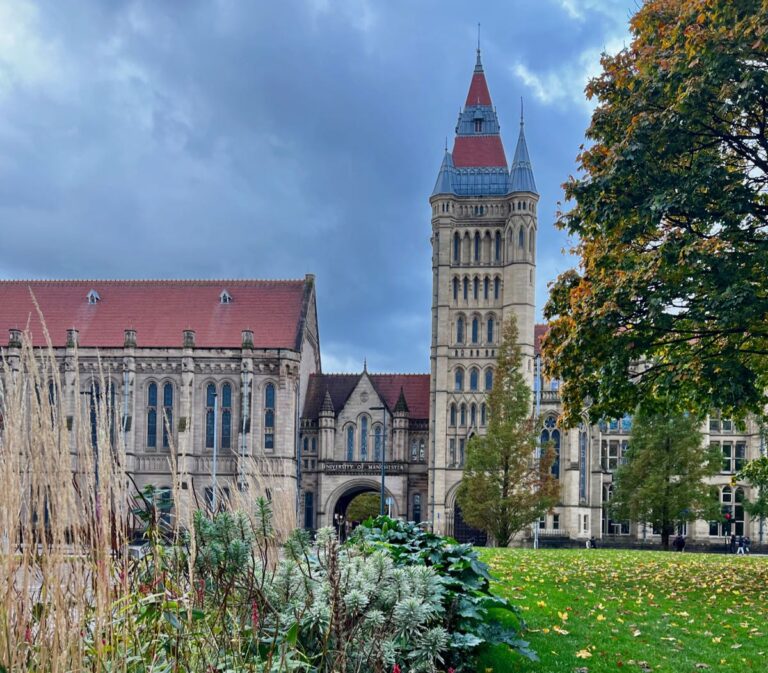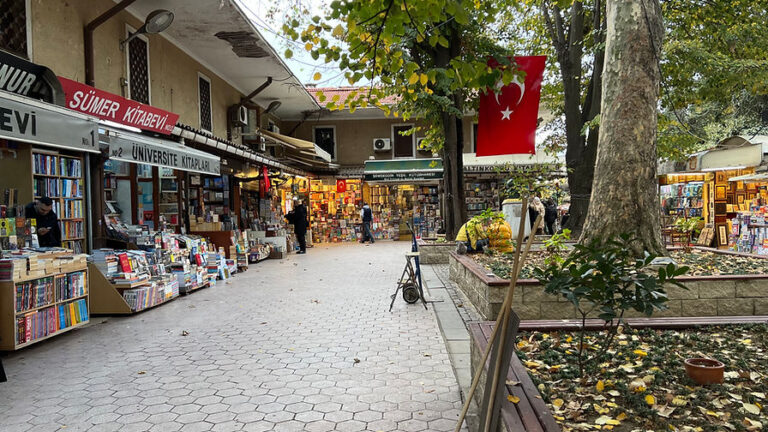Yamadura Mini Refillable Perfume Portable Atomizer Bottle Refillable Perfume Spray, Refill Pump Case for Traveling and Outgoing (5ml, 4 Pack) 4
$8.99 (as of April 7, 2025 11:41 GMT +00:00 - More info)Immerse yourself in the ancient wonder that is the Great Wall of China. Embark on a journey through time as you walk along this iconic structure, spanning over 13,000 miles. From the bustling city of Beijing to the rugged mountain landscapes, each step will unveil a piece of history and offer breathtaking panoramic views. Discover the secrets that lie within the crumbling ruins and intricate watchtowers, and feel the weight of centuries of human achievement under your feet. Join us on this extraordinary adventure as we walk the Great Wall and unlock the mysteries of one of the world’s most awe-inspiring architectural marvels.
History of the Great Wall

Construction of the wall
The Great Wall of China, one of the most iconic structures in the world, has a rich history that dates back over two thousand years. Construction of the wall began during the Qin Dynasty (221-206 BC) and lasted for centuries, with various dynasties contributing to its expansion and renovation. The wall was built using a combination of materials such as brick, stone, wood, and earth, and it spans approximately 13,000 miles, making it the longest man-made structure on earth.
Purpose of the wall
The Great Wall of China was primarily constructed as a defensive fortification against invasions from nomadic tribes, particularly from the north. Its strategic location, stretching across the northern border of China, was intended to serve as a physical barrier to protect the Chinese empire. The wall not only served as a military defense system but also facilitated trade and communication along its length. Over time, the wall became a symbol of national pride and unity for the Chinese people.
Length and scale of the wall
The Great Wall of China is an engineering marvel that spans an astounding length of approximately 13,000 miles. To put it into perspective, that’s equivalent to half the circumference of the Earth or the distance from New York to Sydney. Its scale is awe-inspiring, with its width spanning from 15 to 30 feet and its height ranging from 15 to 50 feet. The wall is punctuated with watchtowers, beacon towers, and fortresses at regular intervals, highlighting the meticulous planning and craftsmanship that went into its construction.
Best sections to walk
Mutianyu
Located in the Huairou District, Mutianyu is a popular section of the Great Wall known for its stunning views and well-preserved architecture. This section features a combination of restored and original wall, allowing visitors to experience both the historical authenticity and modern amenities. The picturesque surroundings and less crowded atmosphere make Mutianyu a fantastic choice for those looking to immerse themselves in the beauty of the Great Wall.
Jinshanling
Jinshanling, located in the Hebei Province, offers a breathtaking hiking experience along the Great Wall. This section is known for its diverse landscapes and beautifully restored watchtowers. Visitors can enjoy panoramic views of rugged mountains, verdant valleys, and winding pathways. The Jinshanling section is perfect for adventurers seeking a challenging yet rewarding hike while marveling at the architectural wonders of the Great Wall.
Simatai
Simatai is a section of the Great Wall famous for its steep slopes, narrow pathways, and stunning views. Located in the vicinity of Beijing, this section provides a unique and adventurous walking experience. Simatai is renowned for its original features, including ancient beacon towers, suspension bridges, and lofty watchtowers. Walking along the Simatai section is a thrilling experience that immerses visitors in the history and natural beauty of the Great Wall.
Badaling
As one of the most visited sections, Badaling offers a convenient and accessible walk along the Great Wall. Situated only 43 miles from Beijing, it is a popular choice among tourists. Badaling showcases well-preserved fortifications, including the iconic “First Pass Under Heaven” gate. Its well-developed infrastructure and easy accessibility make it an excellent option for those seeking a more leisurely walk while appreciating the grandeur of the Great Wall.
Preparing for the walk
Fitness and endurance
Walking the Great Wall requires a reasonable level of fitness and endurance. The wall’s uneven terrain, steep stairs, and long stretches can be physically demanding. Prior to embarking on your journey, it is advisable to engage in regular exercise and build up your stamina through activities such as hiking, stair-climbing, and cardio workouts. This will ensure that you can comfortably enjoy your walk on the Great Wall.
Weather conditions
The Great Wall stretches across various regions in China, each with its own climate. It is essential to check the weather forecasts for the specific section you plan to walk and pack accordingly. Summers can be hot and humid, while winters can be bitterly cold, especially in northern sections. Spring and autumn offer pleasant weather, with moderate temperatures and beautiful scenery. Be prepared for sudden weather changes and always bring appropriate clothing for layering.
What to wear
When walking the Great Wall, it is crucial to wear comfortable clothing suitable for outdoor activities. Opt for lightweight, breathable fabrics that wick away sweat and allow for ease of movement. Choose sturdy, closed-toe shoes with good traction to navigate the sometimes uneven and slippery paths. Don’t forget to bring a hat, sunglasses, and sunscreen to protect yourself from the sun’s rays during the walk.
What to pack
Pack light, but ensure you have essentials such as a refillable water bottle to stay hydrated throughout your walk. Snacks, energy bars, and fruits will provide nourishment during breaks. It is advisable to carry a small backpack to hold your belongings, including a camera or smartphone for capturing memorable moments. Bring a first aid kit, insect repellent, and a raincoat or poncho in case of unexpected weather changes.
Guided tours and self-guided walks
Pros and cons of guided tours
Guided tours offer the advantage of expert guides who provide valuable insights into the history, culture, and significance of the Great Wall. They navigate the routes, ensuring you don’t get lost and provide assistance when needed. Guided tours also often include transportation, meals, and entry fees, providing a hassle-free experience. However, some travelers may prefer the freedom and flexibility of exploring the Great Wall on their own.
Recommended tour companies
For those opting for guided tours, several reputable companies specialize in organizing Great Wall excursions. Examples include China Highlights, Wild Great Wall, and Viator. These companies offer various tour packages tailored to different interests and fitness levels, ensuring an informative and memorable experience. It is recommended to read reviews, compare prices, and consider the itineraries to select the best tour company that suits your preferences.
Benefits of self-guided walks
Self-guided walks on the Great Wall offer an unparalleled sense of freedom, allowing you to explore at your own pace and immerse yourself in the experience. It gives you the flexibility to choose your starting point, duration, and the sections you want to visit. Self-guided walks also enable you to connect more intimately with the surroundings and appreciate the serenity and solitude of the Great Wall, away from the crowds.
Safety considerations
Whether joining a guided tour or embarking on a self-guided walk, safety should be a primary concern. It is crucial to familiarize yourself with the terrain, adhere to the designated paths, and exercise caution on steep or crumbling sections of the wall. Stay hydrated, have a means of communication, and inform someone about your plans. It is advisable to walk in pairs or groups, especially on less-frequented sections, to ensure safety and assistance if needed.
Food and accommodation options
Local dining options
Exploring the Great Wall is not just about marveling at its architectural wonders; it also offers an opportunity to savor authentic Chinese cuisine. Local dining options near the Great Wall range from small restaurants serving regional specialties to street food vendors offering delicious snacks. Sample traditional dishes such as Peking duck, dumplings, and various stir-fried delicacies. Be adventurous and try local favorites to enhance your cultural experience.
Popular local dishes
When visiting the Great Wall, don’t miss out on some of the popular local dishes that will tantalize your taste buds. Gongbao chicken, mapo tofu, and kung pao shrimp are among the delectable spicy Sichuan dishes. Beijing-style hot pot, Mongolian lamb skewers, and Shanxi hand-pulled noodles are also highly recommended. These flavorful and diverse regional dishes showcase the rich culinary heritage of China.
Accommodation near the wall
To fully immerse yourself in the Great Wall experience, consider staying in accommodation located near the wall. This allows you to enjoy breathtaking views, convenient access to the wall, and the tranquility of the surrounding landscapes. Options range from luxurious hotels and resorts to guesthouses or traditional courtyard-style inns known as “sìhéyuàn.” These accommodations offer a comfortable and relaxing retreat after a day of exploring the Great Wall.
Recommended hotels and guesthouses
For those seeking a luxurious experience, options such as the Commune by the Great Wall, and the Brickyard Retreat near Mutianyu offer stunning views, elegant amenities, and impeccable service. Budget-conscious travelers may opt for guesthouses near Jinshanling or Simatai, such as the Gubei Water Town Hotel or Weda Guesthouse. These accommodations provide a cozy and authentic setting, with the opportunity to meet fellow travelers.
Essential tips for walking the Great Wall
Start early in the day
To make the most of your Great Wall experience and avoid crowds, it is best to start your walk early in the day. This allows you to enjoy the tranquil ambiance, witness stunning sunrises, and capture exceptional photographs. Additionally, starting early allows you to complete a significant portion of the walk before the midday heat, especially during the summer months.
Stay hydrated
Walking the Great Wall can be physically demanding, so it is crucial to stay hydrated throughout your journey. Carry a refillable water bottle and take regular sips, especially during hot weather. There are limited opportunities to purchase water along the wall, so it is recommended to bring an adequate supply to last the duration of your walk. Avoid excessive consumption of sugary or caffeinated beverages, as they can lead to dehydration.
Take breaks
While it may be tempting to power through and cover as much ground as possible, it is important to take regular breaks during your walk on the Great Wall. Use these breaks to hydrate, rest, and soak in the incredible scenery. Find a shaded spot under a watchtower, sit back, and appreciate the historical significance and architectural marvels surrounding you. Taking breaks will help you conserve energy and make the most of your experience.
Watch your step
The Great Wall is a combination of well-preserved and partially restored sections, making it important to watch your step. Some sections may have uneven surfaces, steep stairs, or loose bricks. Pay attention to your footing and use handrails or supportive structures if available. Wearing sturdy footwear with good traction is essential for navigating the sometimes challenging terrain.
Respect the cultural significance
As you walk the Great Wall, it is important to remember that you are treading on a site of immense historical and cultural significance. Show respect for the wall and its surroundings by refraining from defacing or damaging the structure. Avoid littering and dispose of any waste responsibly. Adhere to any signage or regulations in place to protect the integrity of the Great Wall for future generations.
Scenic views and photo opportunities
Best viewpoints along the wall
The Great Wall offers numerous breathtaking viewpoints that are perfect for capturing stunning photographs and admiring the surrounding landscapes. Some notable viewpoints include the “Heavenly Ladder” at Jinshanling, which offers sweeping panoramic views of the Great Wall snaking across mountains and valleys. At Mutianyu, the “Ox Horn Edge” provides a striking view of the wall curving along the hillside. These viewpoints allow you to fully appreciate the scale and beauty of the Great Wall.
Sunrise and sunset photography
Witnessing sunrise or sunset while on the Great Wall offers a truly magical experience. The soft light cast upon the ancient structures creates an ethereal ambiance, making it an excellent time for photography enthusiasts. Plan your walk in advance to position yourself at a vantage point where you can capture the sun as it rises or sets behind the wall, painting the sky with vibrant hues.
Capturing the wall’s unique features
As you walk along the Great Wall, take time to capture the unique features that make this architectural wonder truly extraordinary. Showcase the contrast between the wall and its natural surroundings by photographing the rugged mountains, lush valleys, or dramatic landscapes. Zoom in on intricately designed watchtowers, the texture of weathered bricks, and the wall as it disappears into the distant horizon. These details will help you preserve your memories of this remarkable journey.
Learning about Chinese culture
Interaction with locals
One of the most enriching aspects of walking the Great Wall is the opportunity to interact with locals and learn about Chinese culture. Engage with vendors selling souvenirs or food along the wall, and strike up conversations with fellow hikers. Learn a few basic Chinese phrases to express gratitude and show respect when interacting with locals. These interpersonal connections will deepen your understanding of the local culture and enhance your overall experience.
Visiting nearby cultural sites
While the Great Wall itself is a testament to China’s rich history, there are also several cultural sites nearby that offer further insights into the country’s heritage. Consider visiting the Forbidden City in Beijing, an imperial palace complex that was once the residence of Chinese emperors. Explore the Summer Palace, a vast garden retreat that showcases traditional Chinese landscaping and architectural styles. These additional cultural sites will provide a comprehensive understanding of China’s historical and cultural significance.
Attending cultural events
If your visit coincides with local festivals or cultural events, take advantage of the opportunity to immerse yourself in the vibrant traditions of China. Check the local calendar and participate in events such as lantern festivals, dragon boat races, or traditional theater performances. These events offer a glimpse into the rich tapestry of Chinese culture, providing a well-rounded and immersive travel experience.
Environmental impact and responsible tourism
Keeping the wall clean
Responsible tourism entails taking care of the environment and preserving the integrity of the Great Wall. It is essential to carry any waste with you and dispose of it in designated trash bins or bring it back to proper waste management facilities. Avoid littering or leaving behind any non-biodegradable items. By practicing responsible tourism, you contribute to the preservation of this magnificent heritage site.
Respecting the natural surroundings
When walking the Great Wall, respect the natural surroundings by adhering to established paths and avoiding trampling on delicate plant life. Refrain from picking flowers or disturbing wildlife. The Great Wall is situated in pristine landscapes, and preserving the natural beauty of these areas is integral to maintaining the wall’s serene and picturesque ambiance for future generations to appreciate.
Supporting local communities
Responsible tourism involves supporting local communities near the Great Wall. Patronize local vendors, restaurants, and accommodations to contribute to the local economy. Purchase locally made crafts or souvenirs to support local artisans. By engaging with the local community, you foster mutual understanding and create positive social and economic impact for the people living in the vicinity of the Great Wall.
Reflecting on the experience
Thoughts and emotions during the walk
Walking the Great Wall is a transformative experience that evokes a range of thoughts and emotions. As you traverse the winding paths, you may feel a sense of awe at the architectural prowess of ancient civilizations. The solitude and tranquility of certain sections may inspire introspection and introspective thoughts. The panoramic views and breathtaking scenery may leave you speechless, instilling a deep appreciation for the beauty of nature and human achievements.
Personal growth and achievement
Walking the Great Wall is not just a physical feat but also a journey of personal growth and achievement. Each step strengthens your resilience, patience, and determination. Overcoming the challenges of uneven terrain and steep ascents instills a sense of accomplishment and self-belief. The experience fosters personal growth, allowing you to discover your own strengths and conquer obstacles, fostering a greater sense of self-confidence.
Memorable moments
Walking the Great Wall leaves indelible memories that will last a lifetime. Whether it’s the breathtaking views, the camaraderie formed with fellow travelers, or the profound cultural encounters, your journey on the Great Wall will offer numerous memorable moments. Each watchtower you ascend, each panoramic vista you witness, and each friendly interaction with a local will contribute to a tapestry of unforgettable experiences that will stay with you long after you leave the wall.
In conclusion, walking the Great Wall is an adventure that combines natural beauty, cultural exploration, and personal growth. The rich history, panoramic views, and unique experiences make it a destination like no other. By adequately preparing for the walk, practicing responsible tourism, and immersing yourself in the local culture, you can create a truly memorable and transformative journey on the Great Wall of China.







